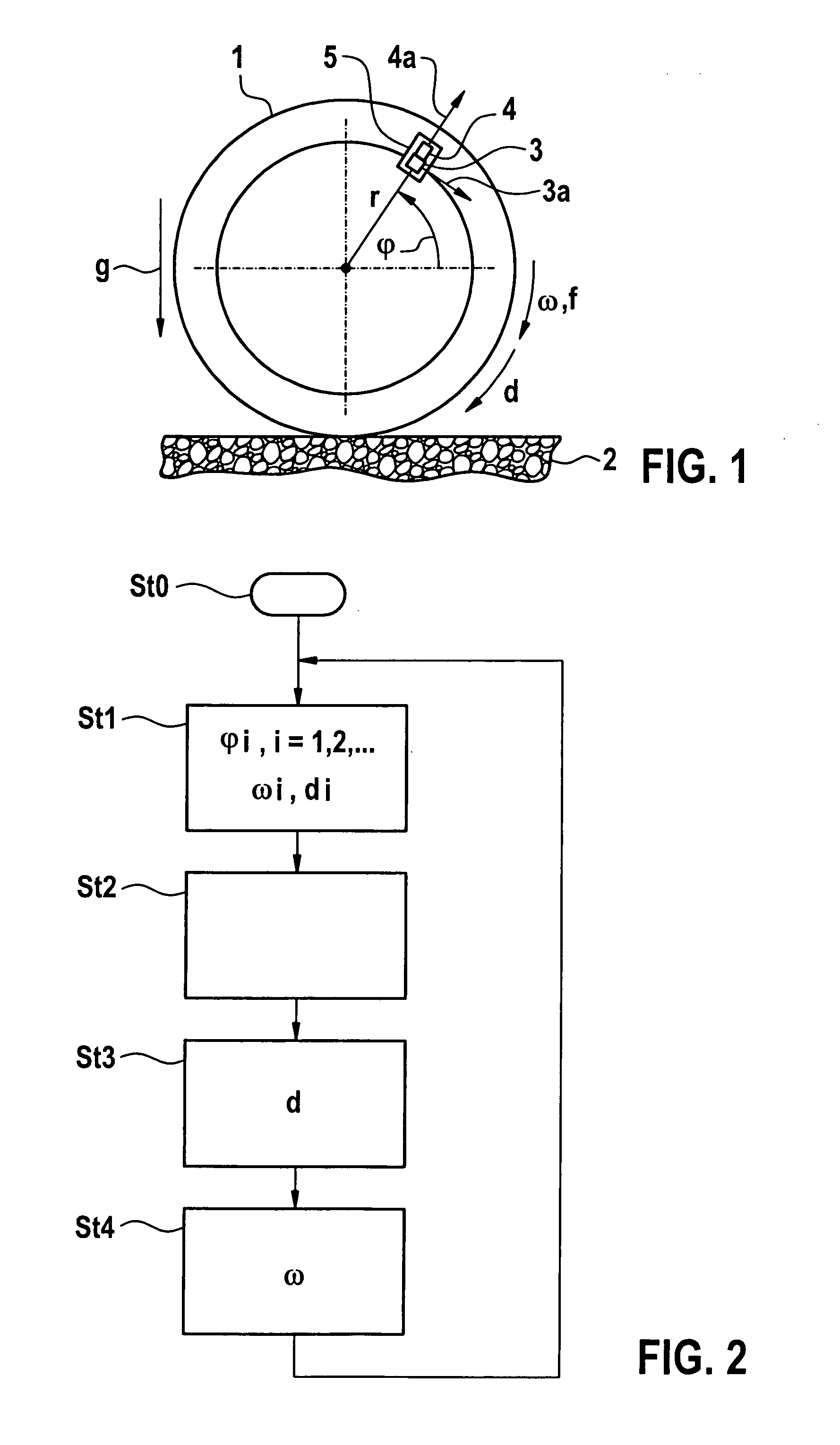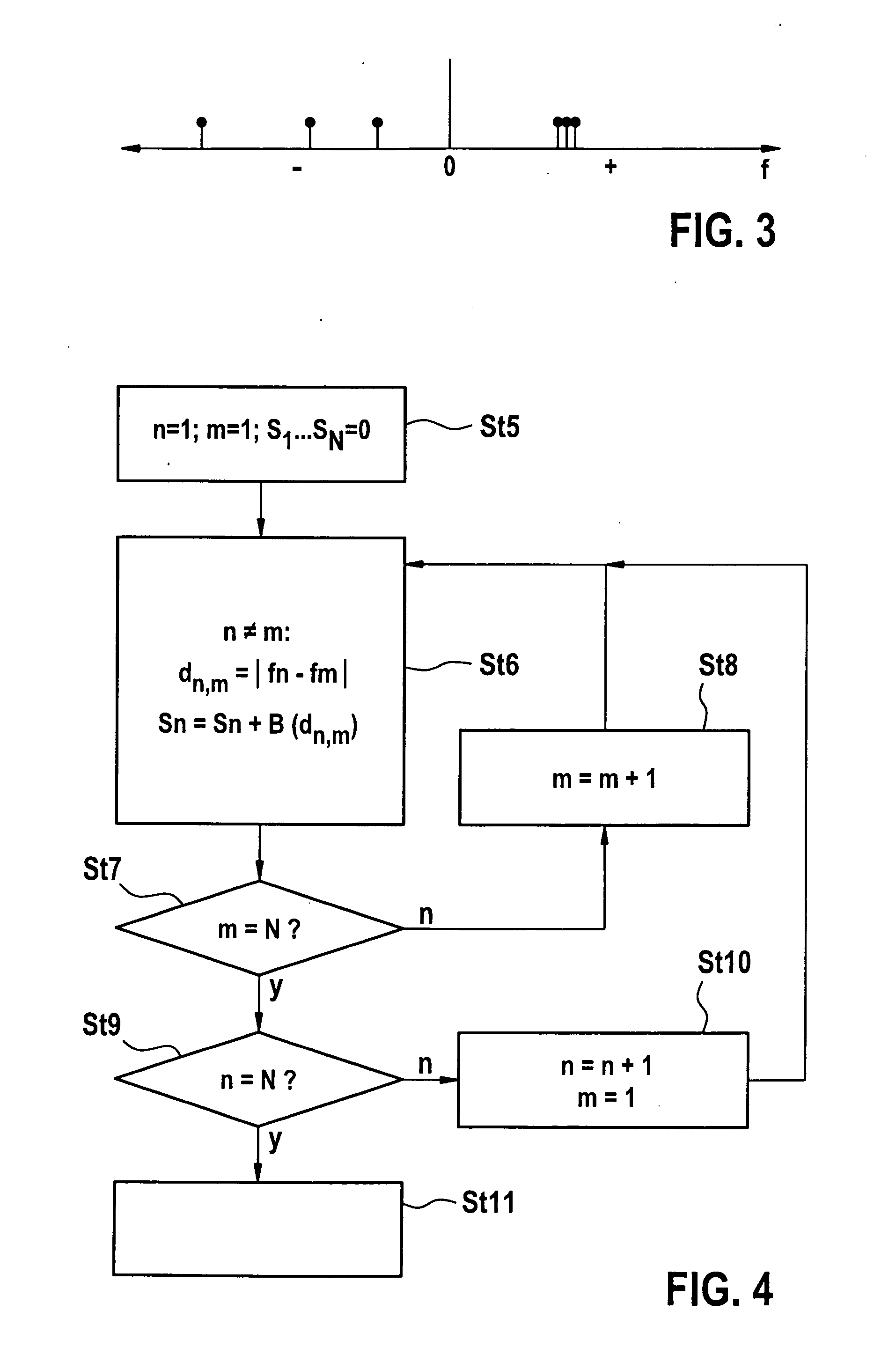Method for ascertaining a rotational direction of a rotating body, and wheel sensor module
a technology of rotating bodies and sensors, applied in the direction of instruments, devices using electric/magnetic means, transportation and packaging, etc., can solve the problems of complicated and costly, and achieve the effect of preventing completely or largely the transmission of erroneous data and great precision
- Summary
- Abstract
- Description
- Claims
- Application Information
AI Technical Summary
Benefits of technology
Problems solved by technology
Method used
Image
Examples
implementation example 1
[0046]The best of the measured rotational frequencies fi is ascertained. This may be done in particular through statistical analysis or weighting. According to the example shown in FIG. 4, it is possible in particular for each ascertained frequency fn=ωn / (2π) to determine the magnitude dn,m of the difference from the other m calculated frequencies of the other measuring points. Each distance or difference dn,m is advantageously evaluated with rating points on the basis of a rating function B(dn,m). For example, a difference dn,mn,m2 Hz with 0 rating points. For each frequency fn, the sum Sn of all rating points of the differences from the other frequencies is ascertained, i.e.
Sn=∑mB(dnm)
[0047]Then rotational frequency fn having the highest sum Sn is ascertained. On the basis of the height of Sn, it is possible in addition to estimate the probability of whether this frequency is actually correct; furthermore, a minimum value for Sn may be established, so that Sn must reach or exceed ...
implementation example 2
[0050]This implementation according to FIG. 5 is similar in principle to the first implementation example of FIG. 4; however the calculated frequencies are not rated with points, but rather in step St12 the entire relevant frequency spectrum is discretized, i.e., broken down into discrete frequency ranges fdi for i=1 to Z. Next, in step St13 all discretized frequencies fdi are rated with rating points of at least one rating function B(fdi), which may correspond for example to the function described above in reference to FIG. 4 or may have a different weighting. Then in step St14 the discretized frequency fdi whose sum Si has the highest value is ascertained to be the best. Thus with this implementation example, contrary to the first implementation example described above, it is also possible to ascertain as the best frequency a frequency fdi that was not calculated in one of the measurements.
[0051]FIG. 6 shows the first implementation example of FIG. 4 in the upper diagram a and the...
PUM
 Login to View More
Login to View More Abstract
Description
Claims
Application Information
 Login to View More
Login to View More - R&D
- Intellectual Property
- Life Sciences
- Materials
- Tech Scout
- Unparalleled Data Quality
- Higher Quality Content
- 60% Fewer Hallucinations
Browse by: Latest US Patents, China's latest patents, Technical Efficacy Thesaurus, Application Domain, Technology Topic, Popular Technical Reports.
© 2025 PatSnap. All rights reserved.Legal|Privacy policy|Modern Slavery Act Transparency Statement|Sitemap|About US| Contact US: help@patsnap.com



